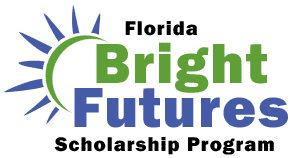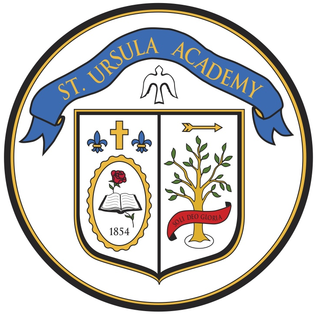
The University of North Texas (UNT) is a public research university in Dallas–Fort Worth metroplex. UNT's main campus is in Denton, Texas, and it also has a satellite campus in Frisco, Texas. It offers 114 bachelor's, 97 master's, and 39 doctoral degree programs. Established in 1890, UNT is one of the largest universities in the United States. UNT is the largest university in Dallas–Fort Worth metroplex and the third largest public university in Texas, following Texas A&M and UT Austin.

The Illinois Mathematics and Science Academy, or IMSA, is a three-year residential public secondary education institution in Aurora, Illinois, United States, with an enrollment of approximately 650 students.

The North Carolina School of Science and Mathematics (NCSSM) is a two-year, public residential high school with two physical campuses located in Durham, North Carolina and Morganton, North Carolina that focuses on the intensive study of science, mathematics and technology. It accepts rising juniors from across North Carolina and enrolls them through senior year. Although NCSSM is a public school, enrollment is extremely selective, and applicants undergo a competitive review process for admission. NCSSM is a founding member of the National Consortium of Secondary Stem Schools (NCSSS) and a constituent institution of the University of North Carolina system.

Bright Futures is a scholarship program in the state of Florida. It is funded by the Florida Lottery and was first started in 1997.
The Siemens Competition was a science competition for US high school students funded by the Siemens Foundation, which was administered by the College Board from 1999-2013 and by Discovery Education from 2014–2017. The Siemens Foundation released a statement on February 1, 2018 stating that the 2017 iteration of the competition was the final one.

The Arkansas School for Mathematics, Sciences, and the Arts (ASMSA) is a public residential high school located in Hot Springs, Arkansas that serves sophomores, juniors, and seniors. It is a part of the University of Arkansas administrative system and a member of the NCSSSMST. The school was originally known as The Arkansas School for Mathematics and Sciences. The school is accredited by AdvancED.

St. Ursula Academy is Toledo's oldest, fully accredited, all-female, Catholic, preparatory school helping girls in grades 6 to 12 for college entry, since 1854.

The South Carolina Governor's School for Science and Mathematics is a public, boarding high school for students in grades 11 and 12, located in Hartsville, South Carolina. The school concentrates on science and mathematics, but offers the full spectrum of the humanities as well.

The Texas Academy of Leadership in the Humanities is a residential high school supported by disciplines of the humanities located at Lamar University in Beaumont, Texas. The Academy is one of only two residential programs for gifted and talented high school students recognized by the Texas State Legislature. The other residential program is the Texas Academy of Mathematics and Science. The dual-credit program, established by the Texas Legislature in 1993, allows high school juniors and seniors to attend college level classes in order to complete their high school requirements, while at the same time gaining credits that must be accepted by any Texas public college and are transferable to other universities subject to each university's transfer regulations.

Dearborn Center for Math, Science and Technology (DCMST) is a specialized secondary education center with a four-year advanced, research based, science and math curriculum located in Dearborn Heights, Michigan. The school was founded in 2001, with its first graduating class in 2005. Most of the school is located in the Henry Ford Community College building, but some of the Michael Berry Career Center (MBCC) building is also used by DCMST. About 75 students are selected each year from the three high schools in the Dearborn City School District. Once in the program, students are committed for four years. In freshman and sophomore year, students attend their three classes at DCMST in the afternoon from 11:15 to 1:55. Juniors and seniors attend in the morning from 7:35 to 10:15. The other three hours are spent at student's home school. DCMST is a member of the NCSSSMST, an alliance of specialized high schools in the United States whose focus is advanced preparatory studies in mathematics, science and technology. The school is also accredited by the North Central Association (NCA) as all other Dearborn Public Schools are.
Rosary High School was established in 1962 by the Dominican Sisters of Springfield, Illinois as a private, all-girls, college-preparatory, Roman Catholic, high school located in Aurora, Illinois. It is ranked as one of the top private schools in the state of Illinois as students achieve on average 5 points higher on the ACT and 43 points higher on the SAT. In addition, Rosary offers 22 various clubs and organizations and 13 sports teams. There is a very high participation rate where 82% of the student body plays in sports with an average GPA of 3.47. Because many of the sports teams reach sectional and state finals, 12 NCAA scholarships are awarded on average each year. Currently, one of Rosary's swimmers, Alexis Yager, has qualified for the Olympic Trials in 3 events. The Beads, Rosary's swim team, has won the Illinois state swim title 8 times. The Beads have also been runner-up for the title four times and have placed third four times.
College of Pharmacy is part of the University of Arizona, a public university in Tucson, Arizona, United States. It is the only pharmacy school at a public Arizona university and one of four health professions colleges at the Arizona Health Sciences Center campus. The college is accredited by the Accreditation Council for Pharmacy Education.
University student retention, sometimes referred to as persistence, is a process to improve student graduation rates and decrease a loss of tuition revenue via university programs.
The Mathematics and Science Academy (MSA), a high school located in Brownsville, Texas, was established by the 79th Texas Legislature in May 2005. It was designed as a commuter program at the University of Texas at Brownsville and Texas Southmost College (UTB) for high school-aged students who are gifted in mathematics and science. Rather than complete their final two years of traditional high school at other public institutions, students of the Math and Science Academy are required to take classes taught by UTB/TSC faculty with regular UTB students, but are provided with more supervision and guidance than traditional college students. The students are not charged tuition, book fees, nor any other fees typically charged by the university, but transportation and food are not provided for students. Graduating from the Mathematics and Science Academy program grants you a Distinguished high school diploma as well as an Associates of Arts degree, if you complete the necessary college hours. MSA is only the second high school program of its kind; the University of North Texas hosts a similar program, the Texas Academy of Mathematics and Science.
The Kansas Academy of Mathematics and Science (KAMS) is a two-year, residential, early-entrance-to-college program for U.S. high school juniors and seniors who are academically talented in the areas of mathematics and science. Located on the Fort Hays State University campus in Hays, Kansas, students concurrently complete their last two years of high school, while earning over 60 college credits.
Mt. San Jacinto College (MSJC) is a public community college in Riverside County, California. It is part of the California Community College system and consists of four locations: San Jacinto, Menifee, Banning and Temecula. Classes are also held at numerous satellite locations such as local high schools and online.
The Academy for Advanced Academics (AAA) is a SACS accredited dual-enrollment secondary school in Miami, Florida, United States. It is a part of the Miami-Dade County Public Schools System and is situated at the Modesto A. Maidique and Biscayne Bay campuses of Florida International University.
The Pelham Memorial High School is the only high school within the town of Pelham, New York, United States. It is part of the Pelham Union Free School District.
Waxahachie Global High School is a high school in Waxahachie, Texas, founded in 2007 on the historic T.C. Wilemon campus. It is one of only 91 STEM academies in the state of Texas. It was additionally granted Early College High School status in 2009 through a partnership with Navarro College, allowing students to earn an associate degree along with their high school diploma. Recently, as of the start of the 2013-2014 school year, Global High made a partnership with UT Tyler for all the STEM-based college courses offered at Global. As a public charter school, students from Ellis County and surrounding areas can attend regardless of zoning. Many students commute from surrounding cities such as Waxahachie, Red Oak, Ennis, Maypearl, Midlothian, Palmer, Italy, Cedar Hill, and Desoto. In 2014, Waxahachie Global was named the "Best High School" by the U.S. News & World Report. Starting in the 2018-19 school year, the Global campus is located in the Billy R. Hancock Building.
Pranav Sivakumar is an American speller and amateur researcher. In 2013, he finished second in the 86th Scripps National Spelling Bee, finished second in the Illinois State Geography Bee, and was named a Siemens Competition National Semifinalist. His National Spelling Bee achievements earned him recognition by Pat Quinn, who declared June 8, 2014 "Pranav Sivakumar Day." In 2014 he was admitted as a student at the Illinois Mathematics and Science Academy, where he graduated in 2017. He currently attends UC Berkeley. He was the first person to be a Google Science Fair Global Finalist twice and won the Virgin Galactic Pioneer Award in 2015. Pranav was mentioned in President Barack Obama's speech at the White House Astronomy Night. Sivakumar was named the $20,000 individual winner of the 2016 Siemens Competition National Finals.










